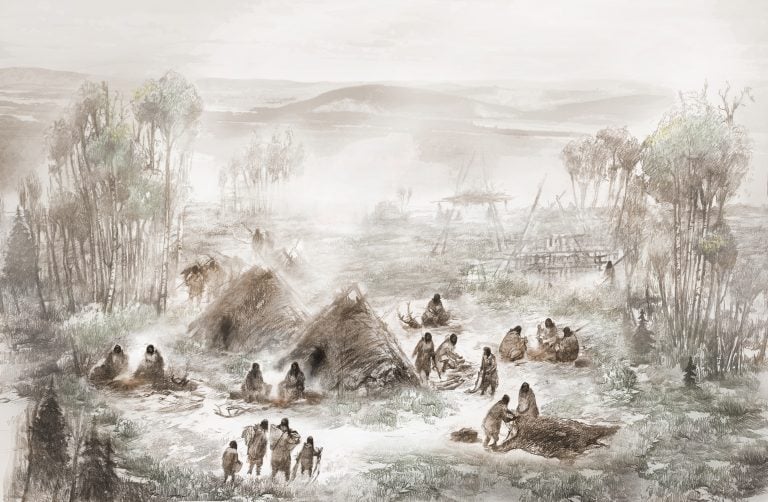Scientists discovered a skeleton at an archaeological site in Alaska, which gives more information on the genetic evidence about the first Native Americans. The skeleton confirms an indigenous population that hadn’t yet been recorded on those lands. It also confirms that humans crossed the Beringia bridge in order to get to North America through the migratory wave coming from Siberia, which is a contribution on how the first humans reached North America.
The team lead by scientists from the University of Cambridge and the University of Copenhagen successfully identified the DNA of a six-week-old infant girl that was found at the Upward Sun River site in Alaska. The local Native American community called her Xach’itee’aanenh T’eede Gaay which means Sunrise girl-child.
Scientists found that she lived about 11,500 years ago. However, the genetic code scientists sequenced didn’t match any of the two native populations which have been known to have lived at that time. The remains are the second-oldest human genome that has ever been found in North America, The New York Times reports. Scientists published their findings in the journal Nature.
“We termed this population ‘Ancient Beringians’ and it seems that they represent an offshoot from the Native American population that diverged before the North and South Native Americans did,” co-lead author J. Victor Moreno-Mayar, from the University of Copenhagen’s Natural History Museum of Denmark, told Newsweek. “It was only by having access to this population that we were able to learn so much about the early Native American population.”
Moreno-Mayar, along with his colleagues estimated that the “admixture event” took place between 20,000 and 25,000 years ago. With the genetic evidence of one of the first Native Americans in mind, the team of scientists believes that Ancient Beringians and other indigenous populations are the common ancestors of North and South Native Americans, and that they started to diversify at that time.
First Native Americans Could Be Two Distinct Groups?
Their research gives two options. The first is that there were two genetically distinct groups that could have passed over the Beringian land bridge at around 15,700 years ago, or the other option, which includes a homogeneous group that crossed the bridge and later divided into Ancient Beringians and other the Native American ancestors. The first group of the first Native Americans could have stayed north while other groups moved South.
“It would be difficult to overstate the importance of this newly revealed people to our understanding of how ancient populations came to inhabit the Americas,” co-lead author Ben Potter, a professor of anthropology at the University of Alaska Fairbanks, said in a statement. “This new information will allow us a more accurate picture of Native American prehistory. It is markedly more complex than we thought.”





